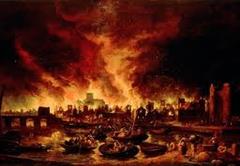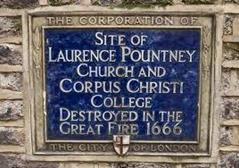
Главная страница Случайная страница
КАТЕГОРИИ:
АвтомобилиАстрономияБиологияГеографияДом и садДругие языкиДругоеИнформатикаИсторияКультураЛитератураЛогикаМатематикаМедицинаМеталлургияМеханикаОбразованиеОхрана трудаПедагогикаПолитикаПравоПсихологияРелигияРиторикаСоциологияСпортСтроительствоТехнологияТуризмФизикаФилософияФинансыХимияЧерчениеЭкологияЭкономикаЭлектроника
New-Evelin.
|
|
Нарциссы
Я словно облако в пути Плеск волн цветам наперекор,
Был одинок совсем и вдруг Не в силах пляску был затмить,
Мне посчастливилось найти Нарциссов пламенный задор,
Нарциссов золотистых луг; Не мог меня не восхитить:
Внизу деревьев, близь воды Я счастья большего не ждал,
Их ветер танцем заводил. Лишь наблюдал и наблюдал.
Они сверкали без конца, С тех пор, когда я отрешен
Как звезды, выстроив узор, От мира и совсем один,
Казалось, Млечный Путь мерцал Они всплывают, словно сон
И отражался в водах. Из подсознательных глубин;
Взор мой насчитал, что уйма их- И я встаю с цветами в круг,
Цветов танцующих, живых. Танцующий припомнив луг.

Unit 7 london. Introduction.
When a man is tired of London he is tired of life.
Samuel Johnson



London from above Telephone box London attractions
· Do modern and ancient exist in tolerance and respect in London?
· What capital city is older London or Kyiv?
· Who founded London?
· What is the original name of London?
· What are the milestones in London’s history?
· What made London one of the biggest ports in the world?
· What is London’s status?
· What well-known centres does London comprise?
London is one of the world’s great cities. Older than Amsterdam, Berlin, Moscow, it has been taking shape for 2.000 years.
The Roman legions of Emperor Claudius (AD 46), looking for a place to cross the River Thames, built a bridge and settled on the north bank close to the site of present-day London Bridge. London began life as a Roman fortification. It was named Londinium (from Celtic “londin”-wild, bold). The fort rapidly developed into a flourishing port and trading post.


The remains of the Roman wall Londinium in Roman times
The statue of a Roman general
Londinium was surrounded with a defensive wall of stone and brick which lasted for many centuries. Inside the Roman wall low houses were built with bright red tiled roofs. There were probably temples, bath houses, shops and market stalls there. This area grew to a square mile, and is known as the City of London. It is the oldest and the smallest of the 33 administrative districts that make up today’s metropolis and, paradoxically, the most modern to look at. Parts of the wall that enclosed the Roman city are still visible beside towering 20th-century concrete and glass structures.
After the Romans left in AD 410, the town declined. The Anglo-Saxons who settled in the region were farmers living in small communities. But, by AD 800, London had become a bustling trade centre again.
During the long period of peace which followed the Norman Conquest of 1066 people started to build outside the walls.
The Black Death, halving the population of the city in 1348, and the Great Plague of 1665 are only the most extreme examples of frequent epidemics that swept the city.
In 1666 the Great Fire of London ended the plague, but it also destroyed much of the city. A new city rose from ashes. A new law was passed requiring new structures to be stone, and the entire character of the City was changed.



The Great Fire of London in 1666 A monument to the 86 churches were destroyed by the Great Fire
Great Fire of London
Today London is the capital of Great Britain, Northern Ireland, the centre of the Commonwealth, and also the seat of the Royal Family, an Anglican Bishop, the Parliament, the high courts, the major administrative bodies and scientific institutions.
Today the metropolis of Great London covers 610 square miles and has about 9 million people. One of its distinctive features is that it has a number of centres: the financial and business centre is called the City, the government centre, royal and political heart of London are in Westminster, the shopping and entertainment centre is in the West End.
In this historic city the modern rubs shoulders with the old, the great and small live side by side in mutualtolerance and respect.
London has a fascinating history and the past is always present even though the city has changed greatly over the centuries. Evidence of earlier days breaks through, sometimes hidden behind modern buildings. Seek it out and know that restoration and renovation keep the London of yesterday alive for tomorrow.
Vocabulary
Emperor Claudius [´ empə rə ´ klɔ: dɪ ə s] римський імператор
Клавдій (10р.до н.е.-54р.н.е.)
Londinium [lʌ n´ dɪ nɪ ə m] Ландиніум
the Anglo-Saxons [´ æ ŋ glə u´ sæ ksə nz] англо-сакси (германські
племена
the Norman Conquest [´ nɔ: mə n´ kɔ ŋ kwest] норманське завоювання
Англії 1066р.
the Great Plague [´ pleɪ g] Велика чума (епідемія
бубонної чуми в Лондоні 1665р., яка забрала 70.000
життів при населенні Англії в 460.000 чоловік)
the Great Fire [´ greɪ t´ faɪ ə ] Велика пожежа у Лондоні
1666р., яка знищила половину міста